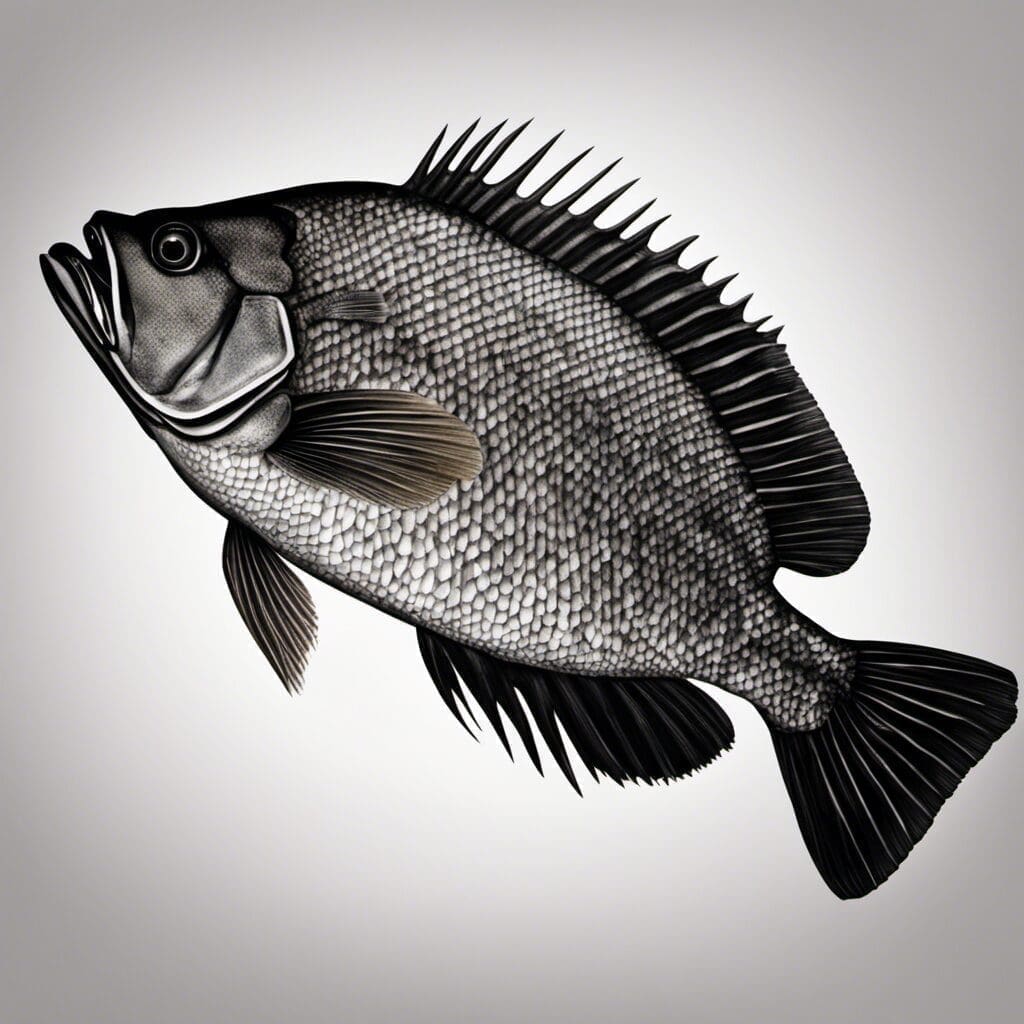Introduction
Species Name: Black Sea Bass
Family Name: Serranidae
The Black Sea Bass (Centropristis striata) is a species of marine fish belonging to the Serranidae family, commonly found in the Western Atlantic Ocean.
Conservation Status
Current status: Least Concern
Conservation efforts:
There have been various conservation efforts orchestrated to ensure the survival and proliferation of the Black Sea Bass. Regulatory measures have been put in place to restrict overfishing, including bag limits, minimum size limits, and seasonal harvest closures.
Statistics
| Aspect | Average | Range |
|---|---|---|
| Length | 1.5 ft | 1 – 2.5 ft |
| Weight | 4 lbs | 1.5 – 9 lbs |
| Average Lifespan | 10 years |
Distribution
Regions/Countries:
Black Sea Bass habitate the Western Atlantic Ocean, from Maine to northeastern Florida, and the northern Gulf of Mexico.
Migration patterns:
Black Sea Bass are migratory species and tend to move north and closer to the shore in summer and return south and offshore to deeper waters in winter
Habitats
Black Sea Bass inhabit saltwater environments. They can often be found at depths ranging from 35 to 105 feet and can handle a broad temperature range from about 39.2 to 77 degrees Fahrenheit.
When and Where to See
Black Sea Bass typically migrate closer to the shore during warmer months, making this the best time for sightings.
Best Fishing Locations
Black Sea Bass can be commonly found in reefs and wrecks along the American East Coast. Top fishing locations include the waters around New Jersey, New York, Massachusetts, Virginia, and North Carolina.
General Tips:
Focus on areas with plenty of structure, such as reefs, wrecks, and rocky bottoms. Use a boat to gain access to deeper waters if possible.
How to Catch
Preferred baits for Black Sea Bass include squid, crabs, shrimp, and clams. Effective fishing techniques include bottom fishing, jigging, and trolling. For the best results, fishing expeditions should be planned during warmer months when the Bass come closer to shore.
Identification Guide
Black Sea Bass are dark brown or black in color, with a long body and a slightly forked tail. Compared to similar species, they have a more robust body and a larger mouth.
Culinary
The Black Sea Bass is renowned for its delicate flavor and firm texture. It’s low in fat and a good source of protein.
How to Cook:
Black Sea Bass can be grilled, baked, pan-fried, or steamed. It’s often served with a light sauce to complement its mild taste.
Nutritional Information:
A 3-ounce serving of cooked Black Sea Bass provides around 105 calories, 20 grams of protein, and around 1.5 grams of fat. It also supplies significant amounts of B vitamins and minerals like potassium, selenium, and phosphorus.
Additional Information
Black Sea Bass are territorial creatures with a broad diet that includes small fish, crabs, and shellfish. They are preyed upon by larger fish, marine mammals, and birds. Their significant value as a commercial and recreational catch has also led to overfishing pressures in the past.
References and Further Reading
For more in-depth information, recommended readings include “Fishes of the Gulf of Maine” by Henry B. Bigelow and William C. Schroeder, and “The Audubon Society Field Guide to North American Fishes, Whales and Dolphins” by Herbert T. Boschung Jr. and Earl S. Herald.
Please remember to fish responsibly and follow all local regulations and guidelines. After all, our actions today will determine the richness of the oceans we leave to future generations. .
Please note that the links, titles, and authors provided above are for reference purposes only. Please follow the local government’s rules and regulations regarding fishing and conservation

